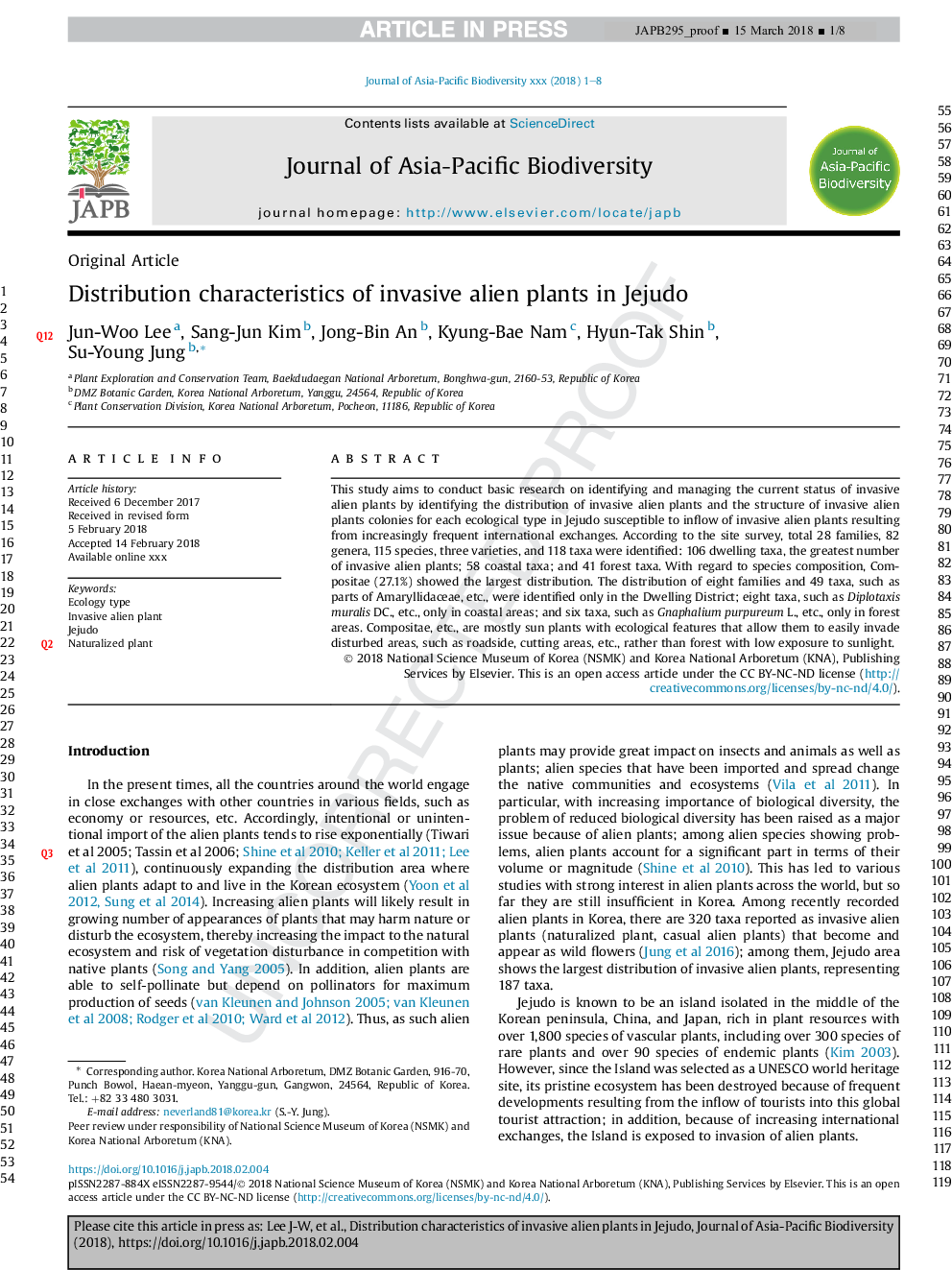| Article ID | Journal | Published Year | Pages | File Type |
|---|---|---|---|---|
| 8848643 | Journal of Asia-Pacific Biodiversity | 2018 | 8 Pages |
Abstract
This study aims to conduct basic research on identifying and managing the current status of invasive alien plants by identifying the distribution of invasive alien plants and the structure of invasive alien plants colonies for each ecological type in Jejudo susceptible to inflow of invasive alien plants resulting from increasingly frequent international exchanges. According to the site survey, total 28 families, 82 genera, 115 species, three varieties, and 118 taxa were identified: 106 dwelling taxa, the greatest number of invasive alien plants; 58 coastal taxa; and 41 forest taxa. With regard to species composition, Compositae (27.1%) showed the largest distribution. The distribution of eight families and 49 taxa, such as parts of Amaryllidaceae, etc., were identified only in the Dwelling District; eight taxa, such as Diplotaxis muralis DC., etc., only in coastal areas; and six taxa, such as Gnaphalium purpureum L., etc., only in forest areas. Compositae, etc., are mostly sun plants with ecological features that allow them to easily invade disturbed areas, such as roadside, cutting areas, etc., rather than forest with low exposure to sunlight.
Keywords
Related Topics
Life Sciences
Agricultural and Biological Sciences
Ecology, Evolution, Behavior and Systematics
Authors
Jun-Woo Lee, Sang-Jun Kim, Jong-Bin An, Kyung-Bae Nam, Hyun-Tak Shin, Su-Young Jung,
